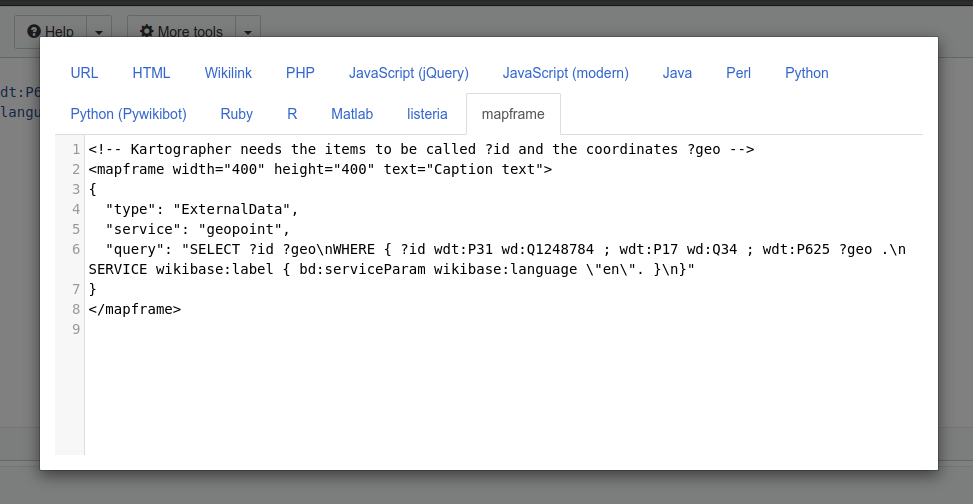I was watching Open Source Fridays streamed on Github’s YouTube channel a little more than a week ago and was struck by how they went about recommending people find projects to contribute too. They were discussing metrics about projects, so I left a comment in the chat.
I would not recommend that way of selecting a project to contribute to. Much better is to contribute to something that you use and where you like to see an improvement.
44:15 Open Source Friday with OpenSauced – redefining the meaning of open source
Even though my pushback was well-received, I feel my point was missed. The host only went so far as to defining “use” as cloning it and getting it running.
Is there a right way to contribute to Open Source?
Yesterday, Edoardo Dusi published a needed blog post on opensource.net with thoughts aligned with mine. He titled it There is a right way to contribute to Open Source and delves deep into the hype surrounding stars and likes. He also provides a great list of other ways of contributing that are not reflected in the most common metrics. Go read it; it is well-written and what sparked this blog post.
Where to contribute
While Dusi touches upon contributing to projects he is familiar with, I want to emphasize the point more clearly. Perhaps it felt so obvious to him, he didn’t feel the need to state it. But as a Wikipedian, I am used to stating the obvious so let me delve a bit deeper into it.
The point that I tried to make in the livestream, and what came so naturally to Dusi, is that it is much easier to contribute to an open source project if you are familiar with it because whatever they build is part of your workflow and that the workflow depends on it working. Knowing what the software is trying to do and the aims of at least one end user (that being you) can really help you along the way when making contributions.
But we are not there yet. Because if you are anything like me, and mostly rely on open source tools, it may not narrow it down much. In that case, I think there are basically three strategies to pick from: your need, your joy, and their need. These were ordered, and I’ll delve into each of them and explain why I think this is the order to consider. I will also mention some, in my important, properties of codebases related to this.
Your need for a change in the codebase
I believe this is partly what Dusi was talking about when he mentioned business motivation. But whereas he described a larger tit-for-tat scenario that would lead to long-time gains in the codebase, I really mean something more direct, as referred to in “scratch your own itch”. By solving a problem in a workflow or tool that you are experiencing yourself, not only do you have in-depth knowledge of the problem, you are also properly motivated to solve it. The reward becomes inherently tangible because you will reap it yourself. And while sometimes it may not actually be worth the time, the joy of seeing your improvement every time you are in that workflow may be very satisfying.
Example – Wikidata SPARQL service
I often use the Wikidata SPARQL service to create map queries that I later used on Wikipedia. But to add them to an article, there was always a step in reformatting the query as Mediawiki did not accept the line breaks similarly to the query service. Therefore, in a hackathon, I wrote a tiny conversion tool and got it added to the code snippets export functionality so that I now just need to copy and paste every time I do a new query.

Your joy of making a contribution
This motivation may be a variation of the former, but I distinguish it separately because often there might not be a direct reward in some of your workflows. What I group in this category are projects that you are charmed by and just want to exist in the world. It could because they are just fun ideas that tickle your mind, or a civictech project that you feel is important to the world somehow. In this group, I would also place most of the motivations that Dusi mentioned, the long-term view of improving some part knowing that others will improve other parts down the line, making the entire project better.
Example – Weeklypedia
Weeklypedia is an automated weekly statistics generator, showing which articles on a language version of Wikipedia got the most edits last week. I don’t really use this knowledge for anything, but I think it is a fun tool, and it gives me a peek into what is on my fellow editors’ minds this week. Here, I could translate the interface to Swedish, and now I get the newsletter delivered to my inbox in my native language. Easier to read for me, and it feels great that it might also lower the barriers for others.
Their need of help
Perhaps surprisingly, the next option in my recommended order is to look at young or small communities rather than the big and “healthy” ones from within the software you are using. My reasons are two-fold.
First, in a small community, even a tiny contribution can have a lot of impact. Not only because you might actually be accelerating the development by a considerable amount, but also because in a smaller community, someone else caring might raise the spirits in the community by orders of magnitude.
Secondly, if your plan was to start an “open source career”, in a small community it may be a shorter step to be delegated more responsibilities and have an impact on the direction of development. Now, keep in mind that not all small communities are looking for contributions and collaboration; it might be a single person’s pet project, so check that your help is wanted before you get started.
Example – OpenRefine
I have been an OpenRefine user for many years, and even did a few video tutorials showing my workflows with the tool. Two years ago, the advisory committee needed a new member, and since one of the staff knew that I was showcasing the tool, I was asked if I would consider helping. Now, OpenRefine is neither small nor new, but there was clearly a need from their side. Since I had experience from being on NGO boards from before, it felt like an excellent way for me to help the community, even though technical contributions here is beyond my skills.
Other properties to consider
Even within these groups, you might have several codebases that you are considering contributing to, and then I think there are some properties that make sense to review.
Ease of collaboration
It might not be surprising that I think that ease of collaboration is an important property of a codebase; after all, for the last five years I was working on the Standard for Public Code, which is all about making it easier to contribute a codebase. Besides the obvious benefit of making it easier for yourself when contributing, it is also a strong signal of a community who wants more people to join them. So if a codebase has a well crafted contributing file or other ways that guide a new contributor into the community and make them (and you!) feel welcome, I would suggest it is a codebase well worth investing your time in.
External rewards
Only lastly, I want to acknowledge the external rewards. Especially if you are looking for a professional career, there are signals that a future employer might be looking for. Now, I want to emphasize that I believe that these in themselves are poor criteria to start with when you are looking for a project to help. But if you are looking at two projects that are equal in all other aspects, it would be naive to suggest that these “fame metrics” would not matter, whether we like it or not.
To be fair, I admit having participated in Hacktober fest and got the t-shirt, and to have submitted codebases I am working in to it and other campaigns. But today, I see these phenomena more as a way to explore new tools and to do outreach, rather than a path for impactful contributions and fame.
Conclusion
In conclusion, contributing to open source is not merely about following metrics or seeking external validation. It’s about finding alignment between your own needs, passions, and the needs of the projects you engage with. As Edoardo Dusi suggested, there is indeed a right way to contribute to open source—one that transcends the superficial measures of popularity and, in my opinion, starts from within you and your needs.
Whether you’re addressing your own pain points, finding joy in nurturing projects close to your heart, or answering the call for help in communities in need, the essence of open source contribution lies in the depth of your engagement and the authenticity of your motivations.
Let that be your guiding star. 🌠

